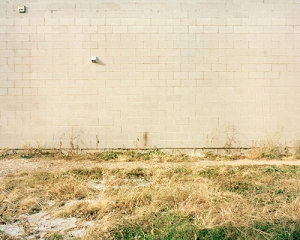As Douglas Nickel, among others included in the SFMOMA symposium based around the question “Is Photography Over” have said in response to the question, “the answer to that question depends on what we mean by “photography” and what we mean by “over.”” Photography, as a technology, is currently rooted in our social construct; millions of people use it numerous times a day for several different reasons and applications, ranging from security cameras to candid images on Facebook to amateur photography on Flickr to a potential exhibition setting. To say that it is over as in, never to be used ever again would be ridiculous. So, over in a fine-art setting? There’s new work being shown all over the world every day in various exhibitions and museums, and although this world might be a small one, it still continues to present new work on a consistant basis, showing no signs of slowing down in terms of photographers or artwork that utilizes photography.
For me, I identify primarily with Joel Snyder and Lorca-DiCorcia, in that it’s the idea of photography, and what it truly means to be a ‘photographer’ in the modern sense, that is over; not photography itself. Photography is alive on multiple levels, but of course, the analog process has lost serious ground to the digital age of photography… but this is more true in a commercial sense, not necessarily an artistic one. Amateur photography is primarily digital, and represents an extremely large piece of the photographic industry, and in turn, affects the potential outlook of where photography is going, in one way or another. However, there is something to be said about someone who goes through all the necessary steps of learning a craft piece by piece, learning technical and conceptual ideas and thoughts behind what it is they’re doing and how they are doing it, all to create a single image. This kind of care for the single image is one of the things that I believe to be over, in a generalized sense. We live in a world of images that we often times take for granted, and believe to be true, but are also keenly aware of their potential to be a fallacy. Because of this, photography as a medium is constantly under scrutiny regarding its ability to depict truth. Even though the way in which the images are made has changed rather rapidly, the content remains the same as it always has; portraits, landscapes, architecture, etc. The possibilities of photography have simply expanded, leaving more (or less, depending on process) room for the photographer’s ability to manipulate imagery. Digital is here to stay. Until they develop hologram technology, anyway.






